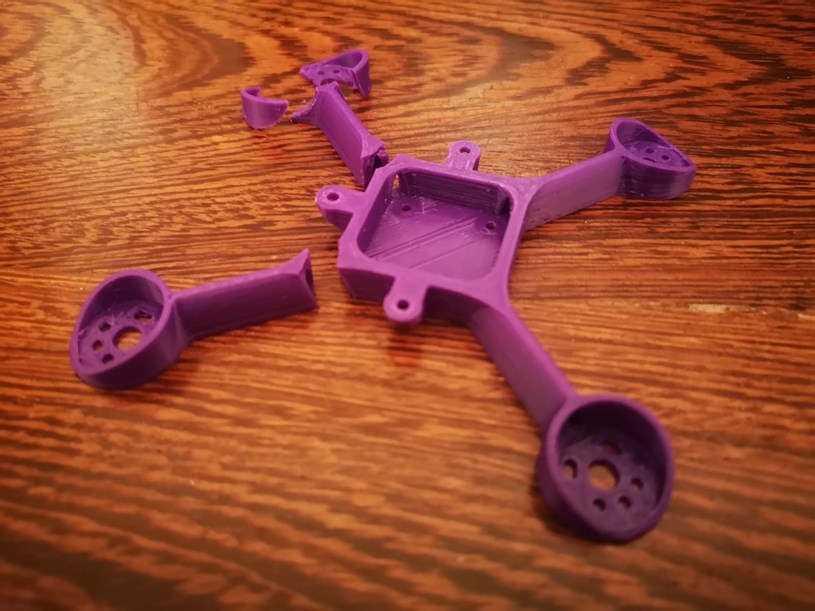REVISION 1.01
Project Lockdown
4/17/2020 | David Jones
First off, thank you to everyone who sent us feedback and suggestions on this little frame, and in particular to Dale, who has run like crazy with this print frame project. Remember, all the feedback we get from you will go into new revisions of this project.
We did some extremely scientific lab testing, threw samples against hard things as hard as possibly, to see what and where this thing would come apart. The arms themselves proved to be extremely tough, only managing to break them apart by twisting them with pliers. My biggest concern I had with it before testing was the flex across the centre section, this didn't seem to be an issue after all.
 The unions between the motor cup and the arm, and then again between the arm and the centre fuselage section were where we got consistent failures. After inspecting all the breaks it was clear that the break itself emanated from the smallest fillets in those respective areas. The stress raisers in those areas or the transition from one region to another, happened to abruptly. This is an easy fix, just add greater fillets and smooth everything out even further.
The unions between the motor cup and the arm, and then again between the arm and the centre fuselage section were where we got consistent failures. After inspecting all the breaks it was clear that the break itself emanated from the smallest fillets in those respective areas. The stress raisers in those areas or the transition from one region to another, happened to abruptly. This is an easy fix, just add greater fillets and smooth everything out even further.
The second failure we had was the motor base plate, it kept cracking up, the arm (top left) in the photo is a good example of what we found.
I think I had vastly underestimated the impact toughness of PLA so hopefully adding some more material around that front edge would help, the REV1.00 motor plate was only 1.1mm thick.
Using PLA I realised is actually really nice for impact testing as it gives really consistent failures and highlights problem areas well. I think the repeatability and ease of printing with PLA makes samples more consistent aswell which helps us a lot with getting consistent testing results, however crude our test method is at this stage.
So I blended out absolutely everything I possibly could and added some more material around the motor cup and bumped the base plate thickness up a bit. I continued the NACA profile from the arm and just ran that around the motor, this both added some needed material but also because the profile didn't change I didn't introduce any unnecessary stress raisers into the area.

This was the result of all those improvements :)
It looks really bad, and it is but I basically just kept smashing up the pieces until we reached this point, smashing it up any further wouldn't yield anything useful. I could't get the centre section to fail, again I pulled it apart with pliers just to see where it would fail. I noticed some pretty consistent failures along the edge of the AIO whoop tabs on the outside of the fuselage. Added some fillets to it just in case.
I was really happy with this result, the amount of abuse and force it took to smash this frame apart was really quite something. Compared to the first revision which I thought showed some really good potential this second revision is much, much tougher and I think most guys will actually be pretty surprised at how tough it is.
This is the final result for REV1.01, I'm really happy with this prototype print frame so far. It is just less then 10g at the moment, so not the absolutely lightest nano frame around but something I think will definitely give a regular carbon frame a run for its money.

I hope to keep refining and improving this printed frame concept as far as I possibly can and see where we eventually land up.
Remember, all your feedback and suggestions go towards improving this frame.
Lastly, be safe and here is the STL file for the Project Lockdown REV1.01
Hope you enjoy!